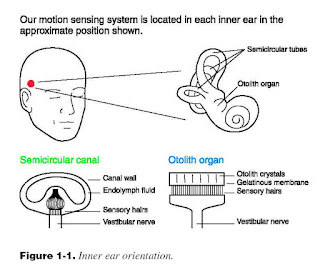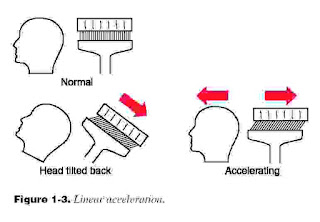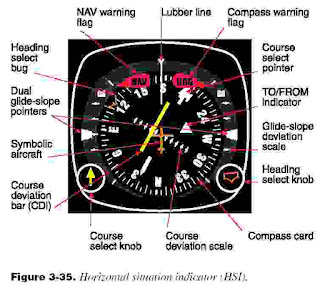Ground Lighting Illusions
Lights along a straight path, such as a road, and even lights on moving trains can be mistaken for runway and approach lights. Bright runway and approach lighting systems, especially where few lights illuminate the surrounding terrain, may create the illusion of less distance to the runway. The pilot who does not recognize this illusion will often fly a higher approach.
Of the senses, vision is the most important for safe flight. However, various terrain features and atmospheric conditions can create optical illusions. These illusions are primarily associated with landing. Since pilots must transition from reliance on instruments to visual cues outside the cockpit for landing at the end of an instrument approach, it is imperative they are aware of the potential problems associated with these illusions, and take appropriate corrective action. The major illusions leading to landing errors are described below.
 Runway Width Illusion
Runway Width Illusion
A narrower-than-usual runway can create an illusion the aircraft is at a higher altitude than it actually is, especially when runway length-to-width relationships are comparable. [Figure 1-5A] The pilot who does not recognize this illusion will fly a lower approach, with the risk of striking objects along the approach path or landing short. A wider-than-usual runway can have the opposite effect, with the risk of leveling out high and landing hard, or overshooting the runway.
Runway and Terrain Slopes Illusion
An up-sloping runway, up-sloping terrain, or both, can create an illusion the aircraft is at a higher altitude than it actually is. [Figure 1-5B] The pilot who does not recognize this illusion will fly a lower approach. Down-sloping runways and Down-sloping approach terrain can have the opposite effect.
Featureless Terrain Illusion
An absence of surrounding ground features, as in an over-water approach, over darkened areas, or terrain made featureless by snow, can create an illusion the aircraft is at a higher altitude than it actually is. This illusion, sometimes referred to as the “black hole approach,” causes pilots to fly a lower approach than is desired.
Water Refraction
Rain on the windscreen can create an illusion of being at a higher altitude due to the horizon appearing lower than it is. This can result in the pilot flying a lower approach.
Haze
Atmospheric haze can create an illusion of being at a greater distance from the runway. As a result, the pilot will have a tendency to be high on the approach. Conversely, extremely clear air can give the pilot the illusion of being closer than he/she actually is, resulting in a long, low approach. The diffusion of light due to water particles can adversely affect depth perception. The lights and terrain features normally used to gauge height during landing become less effective for the pilot.
Fog
Penetration of fog can create an illusion of pitching up. Pilots who do not recognize this illusion will often steeped the approach quite abruptly.
Optical illusion: (in aircraft flight)
A misleading visual image of features on the ground associated with landing, which causes a pilot to misread the spatial relationships between the aircraft and the runway.
Practice Makes Proficient
Through training and awareness in developing absolute reliance on the instruments, pilots can reduce their susceptibility to disorienting illusions.
Lights along a straight path, such as a road, and even lights on moving trains can be mistaken for runway and approach lights. Bright runway and approach lighting systems, especially where few lights illuminate the surrounding terrain, may create the illusion of less distance to the runway. The pilot who does not recognize this illusion will often fly a higher approach.
Of the senses, vision is the most important for safe flight. However, various terrain features and atmospheric conditions can create optical illusions. These illusions are primarily associated with landing. Since pilots must transition from reliance on instruments to visual cues outside the cockpit for landing at the end of an instrument approach, it is imperative they are aware of the potential problems associated with these illusions, and take appropriate corrective action. The major illusions leading to landing errors are described below.
 Runway Width Illusion
Runway Width IllusionA narrower-than-usual runway can create an illusion the aircraft is at a higher altitude than it actually is, especially when runway length-to-width relationships are comparable. [Figure 1-5A] The pilot who does not recognize this illusion will fly a lower approach, with the risk of striking objects along the approach path or landing short. A wider-than-usual runway can have the opposite effect, with the risk of leveling out high and landing hard, or overshooting the runway.
Runway and Terrain Slopes Illusion
An up-sloping runway, up-sloping terrain, or both, can create an illusion the aircraft is at a higher altitude than it actually is. [Figure 1-5B] The pilot who does not recognize this illusion will fly a lower approach. Down-sloping runways and Down-sloping approach terrain can have the opposite effect.
Featureless Terrain Illusion
An absence of surrounding ground features, as in an over-water approach, over darkened areas, or terrain made featureless by snow, can create an illusion the aircraft is at a higher altitude than it actually is. This illusion, sometimes referred to as the “black hole approach,” causes pilots to fly a lower approach than is desired.
Water Refraction
Rain on the windscreen can create an illusion of being at a higher altitude due to the horizon appearing lower than it is. This can result in the pilot flying a lower approach.
Haze
Atmospheric haze can create an illusion of being at a greater distance from the runway. As a result, the pilot will have a tendency to be high on the approach. Conversely, extremely clear air can give the pilot the illusion of being closer than he/she actually is, resulting in a long, low approach. The diffusion of light due to water particles can adversely affect depth perception. The lights and terrain features normally used to gauge height during landing become less effective for the pilot.
Fog
Penetration of fog can create an illusion of pitching up. Pilots who do not recognize this illusion will often steeped the approach quite abruptly.
Optical illusion: (in aircraft flight)
A misleading visual image of features on the ground associated with landing, which causes a pilot to misread the spatial relationships between the aircraft and the runway.
Practice Makes Proficient
Through training and awareness in developing absolute reliance on the instruments, pilots can reduce their susceptibility to disorienting illusions.





.jpg)
